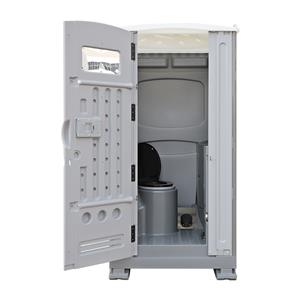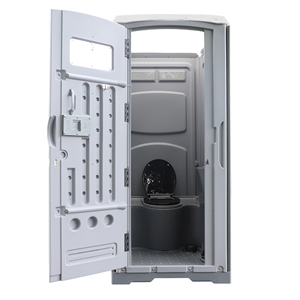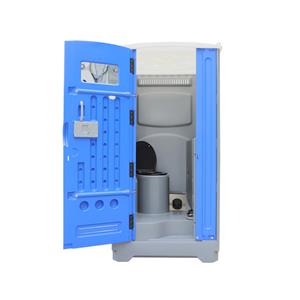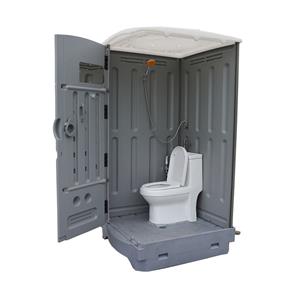Unlocking True Accessibility: The Technical Edge of a Wheelchair Portable Toilet
When you’re planning an outdoor event, a construction site facility, or any situation where mobility-needs matter, standard facilities just don’t cut it. That’s where a Wheelchair Portable Toilet comes in—specifically engineered for accessibility, durability, and usability.
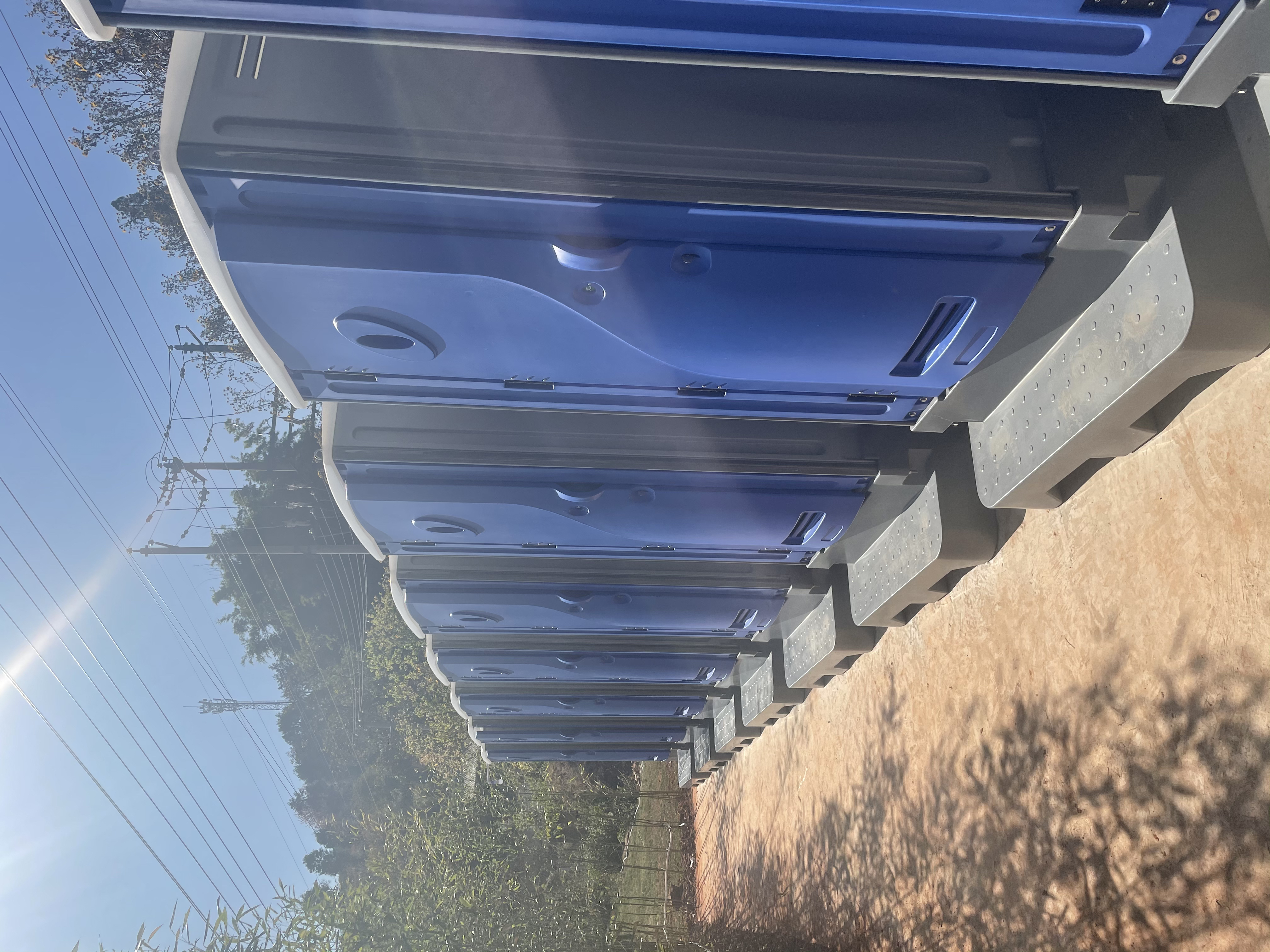
In this blog post, we’ll introduce this product concept, explain why it stands apart from traditional units, present its major technical advantages, and answer common consumer questions from a user’s perspective. We’ll also reference relevant industry benchmarks and technical details to reflect authority and trustworthiness in the category of outdoor mobile toilet, HDPE Disabled Portable Toilets, and HDPE handicap porta potty solutions.
What is a Wheelchair Portable Toilet?
A Wheelchair Portable Toilet is not just a larger porta-potty. It is a purpose-built sanitation unit designed to accommodate wheelchair users, mobility aid users, carers, families and inclusive audiences. In many cases, event organisers or site managers must provide accessible facilities — wide doorways, ramped access, extra space inside for manoeuvring, handrails and non-slip floors become essential.
Compared with standard portable toilets, a wheelchair-accessible model may feature:
Oversized doors and ground-level or ramped entry to enable a wheelchair roll-in.
A larger footprint interior so that a user can turn, transfer, or be assisted comfortably.
Materials and fixtures designed for durability under heavier loads, more frequent use, and outdoor conditions.
Hygiene and maintenance-friendly design to deliver reliable service in events or work sites.
In short: when you hear Wheelchair Portable Toilet, think of an inclusive, robust, flexible sanitation solution—far beyond just “one more porta potty”.
Why This Product Matters: Advantages at a Glance
Here we unpack why choosing a true wheelchair accessible portable unit (such as a high-quality model) is not just an extra cost, but a strategic and ethical step. The advantages can be grouped into three core categories: Accessibility & Inclusivity, Material & Structural Quality, and Versatility in Use.
Accessibility & Inclusivity
By designing for wheelchair access (wide door, ramp or flat floor, turn-space interior) you create a facility that supports people with mobility challenges, carers accompanying them, parents with pushchairs, and persons of all ages. For example, as one industry article states: “Wider doors — Ideal for wheelchair users, people on crutches, mobility aids, or those with pushchairs / buggies and baby car seats.”
Such facilities help maintain dignity and independence for users: “Accessible toilets ensure everyone has access to safe and comfortable restrooms regardless of physical ability.”
They demonstrate inclusive planning and can align with regulations (such as the Americans with Disabilities Act or other local accessibility standards) and contribute to a positive reputation.
Material & Structural Quality (Technical Advantage)
From the product information of Xiamen Toppla Material Technology Co., Ltd. (the manufacturer behind the product line) we glean several technical strengths:
Use of HDPE (High-Density Polyethylene) for the shell reduces weight while increasing resistance to impact, weather, UV, and cracking. (“We also prioritise ADA compliance … our units with HDPE material … resist impacts without cracking.”)
Flat-floor systems and non-slip surfaces allow smooth wheelchair manoeuvre and reduce tripping hazards. (Industry note: “There is adequate space within the unit for a wheelchair user to turn around and close the door comfortably.”)
Roll-in access or ramp access removes threshold barriers; oversized doors and well-positioned handrails enhance safe use.
Improved ventilation, sanitation and maintenance features – for example, units with efficient air-exchange, resistant surfaces, easy-empty tanks and design optimised for outdoor or heavy-use situations.
Proven manufacturing credentials: Toppla lists 130+ patent applications, ISO certifications, large factory scale (80,000 m²), strong experience in plastics and rotomoulding.
Versatility in Use
The unit can function across a range of scenarios: outdoor events, music festivals, construction sites, camps, disaster relief, family-friendly venues.
Because of the durable HDPE shell and engineered design, it works not just once but repeatedly, reducing long-term replacement costs.
It also serves multiple roles: for instance, extra space may allow caregivers to assist, families to accompany children, or parents with strollers to enter. (One article notes “the extra space makes them excellent for families… even if you are sure that you will not face mobility issues, you will surely have a family with kids in attendance.”)
Technical Features in Depth
Let’s dive deeper into the specific technical features that underpin the product’s performance—especially for those looking to evaluate or purchase a unit.
Material & Construction
HDPE shell: This plastic is known for its impact-resistance, chemical resistance, UV-resistance and structural longevity. Using HDPE means the unit sustains outdoor use, rough transport, frequent cleaning, and heavy-duty cycles.
Seamless rotomoulding or injection-moulding (depending on specification) ensures minimal joints and weak points.
Double-skin walls (in some Toppla models) add thermal and structural stability. For instance the TPT-H01 model specification includes single or double skin wall options.
Built-in lift or hoisting rings and steel rods embedded (again in some models) enable safe moving on site.
Accessibility & Ergonomics
Oversized external door: Larger than standard, enabling wheelchairs to enter, manoeuvre, and exit. For example, in one comparable product spec the door opening is 900 mm / 35.43″.
Flat floor / ramp entry: Many units eliminate steps or lips, enabling roll-in access. Non-skid surfaces reduce slip risk.
Internal space: Enough room for a wheelchair user to turn — some units allow a full 360° turn, some a three-point turn depending on dimensions.
· Handrails / grab bars: Strategically positioned to aid transfer from wheelchair to toilet seat and back.
Toilets seats & fixtures at reachable height: Ensuring usability from seated position; accessible sink or hand-wash station may also be at lower height.
Hygiene, Maintenance & Outdoor Suitability
Ventilation: Proper air flow and venting to manage odours in an outdoor or high-use setting. For example, one source notes translucent roof plus excellent ventilation as key features.
Waste & water tank management: In flushable versions, separate fresh water tank and waste tank; pumping, valve systems and drain points designed for efficiency and minimal downtime. For example the TPT-H01 has 160 L fresh water, 400 L waste tank.
Easy cleaning surfaces: Non-porous HDPE means fewer stains, less retention of odour, easier wipe down.
Robust fabrication: Impact resistance means less damage during transport, rough handling or site conditions—lowering repair costs and downtime.
Outdoor resilience: UV-resistant shell, weather-proofing, stable under wind/terrain when secured properly.
Compliance & Standards
Meeting accessibility standards (e.g., ADA in US, or equivalent local regulations) is important. Many sources emphasise features such as minimum interior size, door width, ramp access, handrail height.
Having a reputable manufacturer with certifications, patents, quality management systems adds credibility. For instance, Toppla claims 130+ patent applications and ISO certification.
From a Consumer’s Perspective: What You Want to Know
When you’re considering purchasing or renting a Wheelchair Portable Toilet (or using one on your site/event), you’ll naturally have questions. Here are some key ones – asked and answered succinctly from a user viewpoint.
Question | Answer |
Is it really easy for a wheelchair user to enter and exit? | Yes. High-quality units have roll-in or ramp entry, wide door opening and ample interior space so users or carers are not constrained. |
Does the material hold up in rough outdoor conditions? | Absolutely. Premium models use HDPE shell, forged for impact, UV exposure, frequent cleaning—much more durable than cheap plastic. |
How is maintenance and hygiene handled? | Built-in ventilation, non-porous surfaces and accessible tank systems simplify maintenance. It’s designed for repeated outdoor use with minimal fuss. |
Are these units versatile (for different settings)? | Yes. They serve events, construction sites, camps, disaster relief, family-friendly venues—they’re adaptable across applications. |
Does it make sense financially compared to standard units? | Yes — while upfront may be more, the durability, broad usability/inclusivity, and lower downtime justify cost. Also supports brand value/inclusivity goals. |
How do I know it meets accessibility standards? | Choose models certified to recognised standards (ADA or local equivalent). Check specifications: door width, floor plan, handrail positions, ramp etc. |
What about user comfort (odour, space, assistance)? | High-end versions address this: spacious interiors, ventilation systems, non-slip floors, intuitive layout. Users report greater comfort and dignity. |
Real-World Applications & Why It Matters
Let’s look at practical settings where the right Wheelchair Portable Toilet makes a measurable difference—and why your decision matters.
1. Events & Festivals
At events, organisers strive to serve all attendees. A unit with the keywords outdoor mobile toilet and HDPE handicap porta potty will ensure people using wheelchairs or mobility aids aren’t excluded or faced with awkward standard units. The result: better guest experience, fewer accessibility complaints, enhanced reputation.
2. Construction Sites & Work Camps
Sites often have varying terrain, outdoor exposure and require robust facilities. A durable HDPE unit provides reliability, and because it is designed for mobility-aid users (or those with temporary disabilities) it ensures compliance with occupational health-safety requirements and fosters inclusive culture.
3. Temporary or Remote Installations
Think disaster relief, remote camps, outdoor filming or sporting events. The portability, outdoor resilience and quick set-up of these units make them ideal. Because the unit is engineered for accessibility and durability, you avoid many of the pitfalls of standard portable toilets in remote settings.
4. Public Spaces & Family-Friendly Venues
Zoos, parks, fairs, outdoor shopping centres all benefit from inclusive facilities. Families with strollers, elderly persons, wheelchair users—everyone can use the restroom comfortably if the right unit (one flagged as HDPE Disabled Portable Toilets) is in place.
In all these contexts, you not only solve a practical sanitation need — you send a message that you care about inclusivity, accessibility and quality infrastructure. That’s good business, good ethics, and good user experience.
How to Choose the Right Wheelchair Portable Toilet
Here are some criteria you should use when selecting the correct unit for your needs:
Material & Build Quality: Prefer HDPE shell, known manufacture, strong structural integrity, designed for heavy outdoor use.
Entrance Design: Ramp or flat floor (no step lip), wide door opening (for wheelchair plus assistant), non-slip entry surface.
Interior Space: Enough for manoeuvre, transfer, assistive devices; handrail placement; toilet seat height.
Maintenance & Hygiene Features: Ventilation, waste tank sizing, ease of cleaning surfaces, parts serviceability.
Compliance & Certification: Check for accessibility standards (e.g., compliance with ADA or local regulations), manufacturer patents/certifications.
Application Fit: Ensure the unit is rated for outdoor/mobile use if that’s your scenario; check durability for site conditions (wind, terrain, transport).
Service & Support: Manufacturer reputation, spares availability, ease of logistics (delivery, setup, relocation).
Cost vs Lifetime Value: While upfront cost may be higher, durability and inclusivity often deliver better ROI over time compared with cheaper units that fail or exclude users.
Conclusion
The Wheelchair Portable Toilet is more than a sanitation accessory—it’s a strategic component of inclusive design, site reliability and user dignity. By choosing a model built with high-density materials like HDPE, engineered for accessibility (roll-in design, wide entry, manoeuvre space) and backed by a strong manufacturer pedigree (such as Xiamen Toppla), you elevate your standard of service. Whether you’re organising an outdoor event, managing a construction site or equipping a family-friendly venue, the investment pays off in reliability, user satisfaction and reputation.
By emphasising technical attributes, accessibility features and real-world applicability, you align both business goals and ethical standards. Don’t just provide a “porta-potty”—provide a solution that works for everyone. Your audience will notice. Your users will appreciate it. And your bottom line will benefit.

